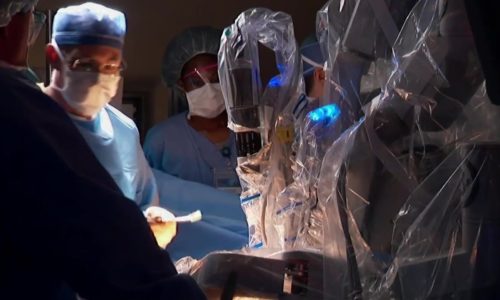Hernia Surgical Mesh Implants |
Dr. Michael Gonzalez Ramos, General Surgeon with Baptist Health South Florida, affirms the risks of robotic surgery are the same as with open or traditional surgery: infection, bleeding, hematoma or any recurrence.
Mesh is a synthetic material used for reinforcing the repair. There are other tapes of mesh, which are biological and they’re made from either porcine or from human tissues, the doctor describes.
The specialist says mesh doesn’t reduce the patient’s mobility, but it reduces the risk of hernia coming back.
Transcript
So you have a patient that comes into your office and they ask what are the risks? is this… am I gonna be okay am I gonna be back up and running in no time? > So I usually tell them that the risk of robotic surgery are essentially the same as with open or traditional surgeon, okay infection bleeding hematoma or any recurrence among others but usually I think those risk factors tend to be or those complications tend to be a little bit less, the robot really allows you to visualize stuff better and if you can visualize everything better you can do better surgery. > Let’s get into the technique of the robotic surgery a mesh is inserted to where the hernia is so explain a little bit to explain for it for us what this mesh does and what happens to the muscles and to the hernia as you insert that mesh? > It’s a synthetic material that we use to basically reinforce the repair there are other types of mesh which are biological and they’re made from either porcine or from human tissues and basically it’s a scaffold and and we use it for us to reinforce the repair initially we stitch or tack the mesh to whether hernia was and overtime over the course of a few weeks to a month or two it integrates and tissue grows into it in forms new tissue. So so basically it’s like forming a scar to reinforce the repair. So the hernia is removed or corrected and the mesh is inserted to create new tissue. > Exactly! To try to buttress or reinforce that repair. > So the muscles surrounding the Sarnia what happens to them, how are they affected during surgery or if nothing happened. So usually you know you you stitch you stitch the faster which is what in cases the muscles you want to bring that Anatomy back to its normal position, so that the patients can have you know full use of their core muscles again and and the mesh kind of becomes a part of you it it basically scars in. It doesn’t really affect your mobility in any way but it does reduce greatly the risk of a hernia coming back.








